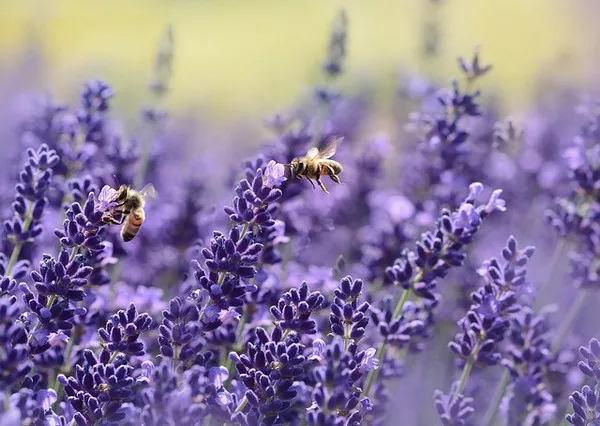Butterflies are not only a delight to behold with their vibrant colors and graceful flight, but they also play a crucial role in pollinating flowers and maintaining ecosystem balance. For avid gardeners and nature enthusiasts, creating a butterfly-friendly garden is a rewarding endeavor. One of the key aspects of such a garden is selecting the right flowers that attract butterflies. In this comprehensive guide, we will explore some of the most enticing flowers that will beckon these winged wonders to your garden.
1. Milkweed (Asclepias):
Milkweed is perhaps one of the most well-known plants for attracting butterflies, especially monarchs. Monarch butterflies rely on milkweed as their primary host plant for laying eggs and as a food source for their caterpillars. The sweet nectar of milkweed flowers is also highly attractive to a variety of butterfly species, making it an essential addition to any butterfly garden.
2. Lavender (Lavandula):
Known for its fragrant blooms and silvery foliage, lavender is not only a favorite of gardeners but also a magnet for butterflies. The long-lasting blooms of lavender produce abundant nectar, which attracts butterflies while adding beauty and aroma to the garden. Species like the swallowtail and painted lady are particularly fond of lavender flowers.
3. Buddleia (Butterfly Bush):
True to its name, the butterfly bush (Buddleia) is a powerhouse when it comes to attracting butterflies. Available in a variety of colors, including purple, pink, and white, butterfly bushes produce large clusters of fragrant flowers that are irresistible to butterflies. These fast-growing shrubs are a favorite of many butterfly species and can provide a continuous source of nectar throughout the blooming season.
4. Zinnia (Zinnia elegans):
Zinnias are easy-to-grow annual flowers that come in a wide range of colors, shapes, and sizes. Their vibrant blooms and long-lasting flowers make them a popular choice for butterfly gardens. Zinnias are rich in nectar and are frequented by a variety of butterfly species, including monarchs, swallowtails, and painted ladies. Planting a mix of zinnia varieties can ensure a constant supply of nectar for butterflies throughout the summer months.
5. Echinacea (Coneflower):
Echinacea, commonly known as coneflower, is not only prized for its medicinal properties but also for its ability to attract butterflies. The daisy-like flowers of echinacea produce ample nectar, which attracts butterflies, bees, and other pollinators. Varieties such as Echinacea purpurea and Echinacea angustifolia are particularly attractive to butterflies and can add a splash of color to any butterfly garden.
6. Verbena (Verbena bonariensis):
Verbena is a versatile perennial plant that is valued for its long-lasting blooms and drought tolerance. The tall, slender stems of verbena are adorned with clusters of small, colorful flowers that butterflies find irresistible. Verbena bonariensis, in particular, is a favorite of butterflies and can attract species such as monarchs, painted ladies, and fritillaries to the garden.
7. Lantana (Lantana camara):
Lantana is a popular flowering shrub that is prized for its colorful blooms and ability to attract butterflies. The small, clustered flowers of lantana produce abundant nectar, which makes them highly attractive to butterflies and other pollinators. Lantana comes in a variety of colors, including red, orange, yellow, and pink, and can bloom continuously throughout the growing season, providing a reliable food source for butterflies.
8. Phlox (Phlox paniculata):
Phlox is a classic garden favorite known for its fragrant flowers and long blooming period. The clustered blooms of phlox come in a variety of colors, including white, pink, purple, and blue, and are highly attractive to butterflies. Planting phlox in your butterfly garden can provide a consistent source of nectar for butterflies while adding beauty and fragrance to the landscape.
9. Coreopsis (Tickseed):
Coreopsis, also known as tickseed, is a cheerful perennial flower that is native to North America. The bright, daisy-like flowers of coreopsis are a favorite of butterflies and other pollinators, thanks to their abundant nectar supply. Coreopsis varieties such as Coreopsis verticillata and Coreopsis grandiflora are easy to grow and can thrive in a variety of soil and light conditions, making them an excellent choice for butterfly gardens.
10. Aster (Asteraceae family):
Asters are late-season bloomers that provide a vital food source for butterflies as they prepare for migration or hibernation. The daisy-like flowers of asters come in shades of purple, pink, blue, and white, and are highly attractive to butterflies, bees, and other pollinators. Planting asters in your garden can help sustain butterfly populations late into the fall and provide a colorful finale to the growing season.
Conclusion
Creating a butterfly-friendly garden is a rewarding experience that not only brings beauty and joy but also contributes to the conservation of these delicate creatures. By choosing flowers that are rich in nectar and planting a diverse range of species, you can attract a variety of butterflies to your garden and provide them with a reliable food source throughout the year. Whether you have a small backyard garden or acres of land, there are plenty of flowers to choose from to create a haven for butterflies and other pollinators. So roll up your sleeves, dig in the dirt, and watch as your garden comes alive with the mesmerizing dance of butterflies.


